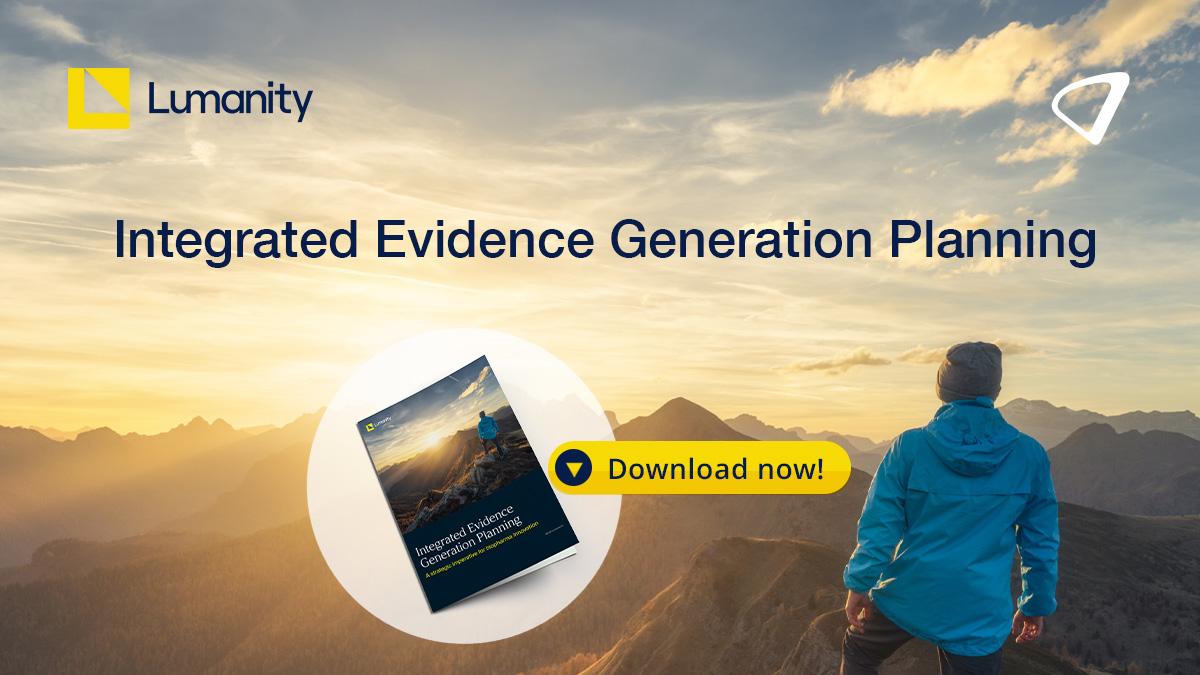The diagnostic odyssey: Challenges and opportunities in transthyretin amyloidosis (ATTR)

This publication has not been sponsored or paid for by any external entities. The insights and perspectives shared are organic, reflecting the author's genuine viewpoints and professional expertise within the industry, with the content created by AstraZeneca.
Transthyretin amyloidosis (ATTR) is a rarely diagnosed and relentless disease that demands our attention.1 Despite its severity, ATTR often slips under the radar, leading to a complex diagnostic journey, delayed treatment options and sub-optimal standards of care.
There are two main forms of ATTR; cardiomyopathy (ATTR-CM), which impacts the heart, and polyneuropathy (ATTR-PN), which damages nerves in the hands, feet, and arms.2,3 Life with ATTR can drastically impact a person’s day to day, limiting physical abilities, underscoring the importance of early diagnosis and timely access to treatment to improve patient outcomes and quality of life.
Despite this, diagnosing ATTR early is difficult due to its complex nature. Throughout my career, I have dedicated considerable effort to reducing health and access inequalities across the UK, especially for those affected by under-diagnosed conditions such as ATTR. In my experience, addressing the unique inequalities experienced by those living with a rare disease may be even more challenging, and there are a few key barriers that must be overcome.
Barriers to diagnosis and opportunities to innovate
Correctly diagnosing ATTR is like finding a needle in a haystack – it can take as long as four to eight years. It is therefore difficult to pinpoint exactly how many people live with ATTR in the UK.4 Take ATTR-CM, for instance – there are only 800 known cases in the UK, but more may be living with it undiagnosed.5,6 Vague and non-specific symptoms such as breathlessness, fatigue, lower limb swelling, and arrhythmias overlap with other, more common cardiovascular conditions, leading to misdiagnosis.7 There is a real need for both specialists and primary care givers to better recognise the pattern of symptoms associated with ATTR and understand the available diagnostic resources to expedite referrals and treatment.
There are many ways to connect the dots between early signs and symptoms of ATTR. For example, there’s the mnemonic, HIDDEN, to help recognise the symptoms:8
- Heart failure with preserved ejection fraction
- Increased wall thickness
- Diastolic dysfunction
- Discordance between QRS voltage and LV wall thickness
- Echocardiogram changes
- Nervous system dysfunction
Noticing the patterns that indicate ATTR allows for physicians to improve early detection, intervene soon, and ensure patients receive timely treatment.
Leveraging advanced diagnostic tools – including artificial intelligence (AI)-assisted echocardiography, electronic medical algorithms, and biomarkers – is important in accelerating the identification of ATTR, particularly in patients lacking clear cardiac-related symptoms. Genetic testing could also play a significant role in confirming hereditary-ATTR, allowing for early intervention and family screening.10 This is something we’re keen to explore with partners going forward, as we believe that by combining our strengths, we can move faster and smarter to make these new tools more accessible and effective, helping patients get the care they need, quickly.
Challenges with treatment access and prospects to advance care
Another key challenge faced by those affected by ATTR is, unfortunately, access to specialised facilities. The National Amyloidosis Centre (NAC) in London is the UK’s only ATTR centre of excellence. Although the centre itself is highly respected, many patients face barriers due to physical limitations, such as distance from the site. This adds complexity to an already lengthy and difficult diagnostic journey. This means many may miss out on accessing care, potentially even further exacerbating their condition.
Enhancing high-quality care requires improved connectivity among healthcare professionals and centres of excellence as they expand into a network across the UK. By facilitating closer collaboration among experts and extending diagnostics and care nationwide, we can reduce access inequalities for patients while maintaining the exceptional leadership provided by the expertise at the NAC. This approach benefits, most importantly, the patients, as well as healthcare systems.
Impact on patients and caregivers
ATTR’s progressive nature and debilitating symptoms affect a patient’s independence, employment, and overall quality of life. , As the disease advances, patients often experience a decline in physical capacity, which limits their ability to take part in social interactions and day-to-day activities. This may lead to early retirement or job loss, contributing to significant financial burdens.12,13
In addition to the physical symptoms, ATTR may impose a profound emotional and psychological toll. Diagnostic delays and limited treatment options can lead to prolonged uncertainty and distress for both patients and their caregivers. The loss of independence can also be emotionally devastating, leading to feelings of frustration and isolation.12, 13, 14 This emotional toll is particularly evident for those with hereditary ATTR who weigh up the likelihood of genetic transmission when facing the decision to start a family. This can lead to feelings of guilt, anxiety, and isolation.14
It’s been recorded that patients and caregivers feel a real gap when it comes to emotional and psychological support.14 Counselling services or peer support groups can make a huge difference, but often they’re either hard to access or not offered at all. There’s a real opportunity to build more holistic care that doesn’t focus solely on the physical side of the disease, but also on supporting people’s mental and emotional wellbeing throughout their journey.
Transforming the rare disease landscape starts with listening to and prioritising patient needs, with the goal of ensuring the best possible outcomes. I hope that our continued conversations about ATTR and its symptoms will drive increased and more timely recognition of this often-hidden disease, ultimately improving the lives of those affected.
References
- Gertz M, et al. Avoiding misdiagnosis: expert consensus recommendations for the suspicion and diagnosis of transthyretin amyloidosis for the general practitioner. BMC Fam Pract. 2020;21(1):198.
- Cleveland Clinic. Transthyretin amyloidosis (ATTR-CM) Available at: https://my.clevelandclinic.org/health/diseases/17855-amyloidosis-attr. Accessed June 2025.
- Lobato, L. The landscape of treatment of chronic kidney disease in hereditary ATTR amyloidosis. Orphanet J Rare Dis. 2015;10(Suppl 1):I12.
- Hawkins P, et al. Evolving landscape in the management of transthyretin amyloidosis. Ann Med. 2015;47(8):625-638.
- NICE. Tafamidis for treating transthyretin amyloidosis with cardiomyopathy TA984. Available at: https://www.nice.org.uk/guidance/ta984 Accessed June 2025.
- GOV.UK Acoramidis approved to treat wild-type or variant transthyretin amyloidosis in adults with cardiomyopathy. Available at: https://www.gov.uk/government/news/acoramidis-approved-to-treat-wild-type-or-variant-transthyretin-amyloidosis-in-adults-with-cardiomyopathy Accessed June 2025.
- Gertz MA. Hereditary ATTR amyloidosis: burden of illness and diagnostic challenges. Am J Manag Care. 2017;23(7 Suppl):S107-S112.
- Sabbour H, et al. From Clinical Clues to Final Diagnosis: The Return of Detective Work to Clinical Medicine in Cardiac Amyloidosis. Front Cardiovasc Med. 2021; 8: 644508
- Nativi-Nicolau JN, et al. Screening for ATTR amyloidosis in the clinic: overlapping disorders, misdiagnosis, and multiorgan awareness. Heart Fail Rev. 2022;27(3):785-793.
- Merino-Merino A, et al. Utility of Genetic Testing in Patients with Transthyretin Amyloid Cardiomyopathy: A Brief Review. Biomedicines. 2024;12:25.
- University College London. National Amyloidosis Centre. Available at: https://www.ucl.ac.uk/amyloidosis/national-amyloidosis-centre. Accessed June 2025.
- Stewart M, et al. Characterizing the High Disease Burden of Transthyretin Amyloidosis for Patients and Caregivers. Neurol Ther. 2018;7(2):349-364.
- Lane T, et al. Natural History, Quality of Life, and Outcome in Cardiac Transthyretin Amyloidosis Circulation. 2019;140(1):16-26.
- Rintell, D, et al. Patient and family experience with transthyretin amyloid cardiomyopathy (ATTR-CM) and polyneuropathy (ATTR-PN) amyloidosis: results of two focus groups. Orphanet J Rare Dis. 2021;16-70.
Job code: GB-67143
Date of preparation: June 2025












